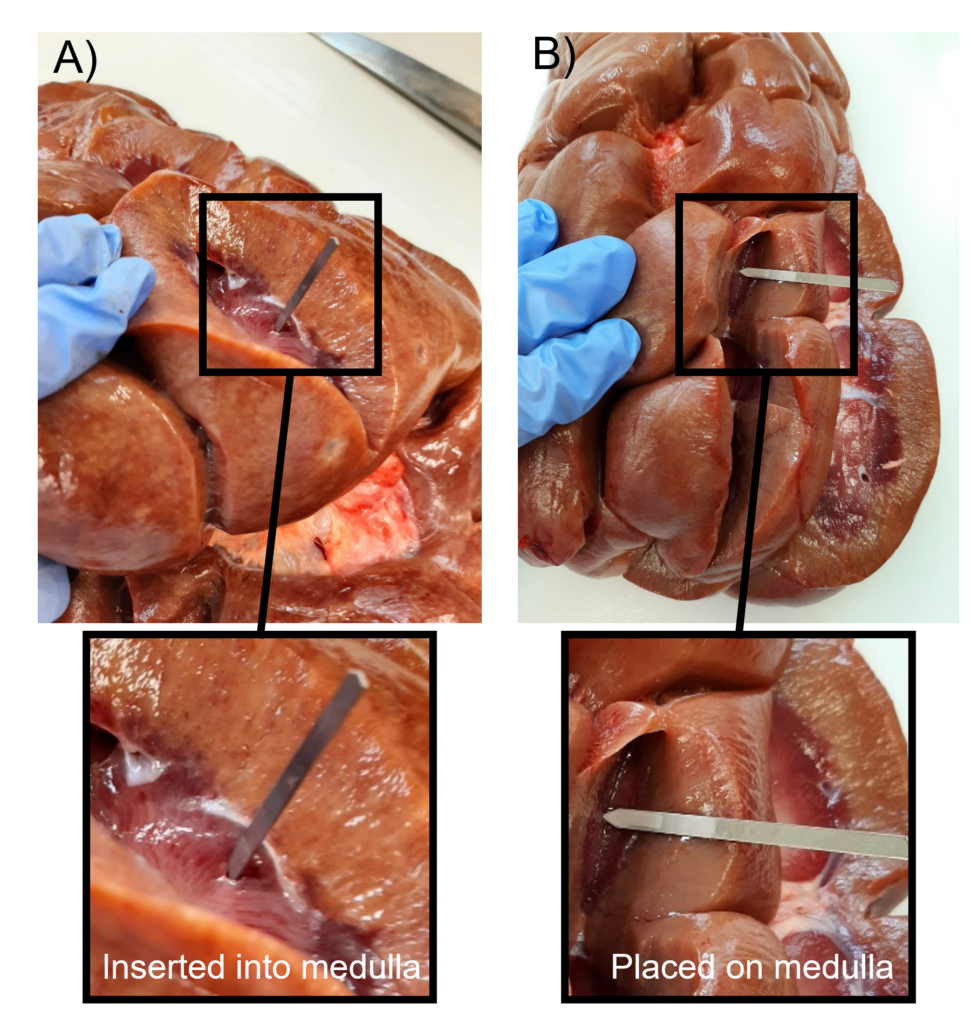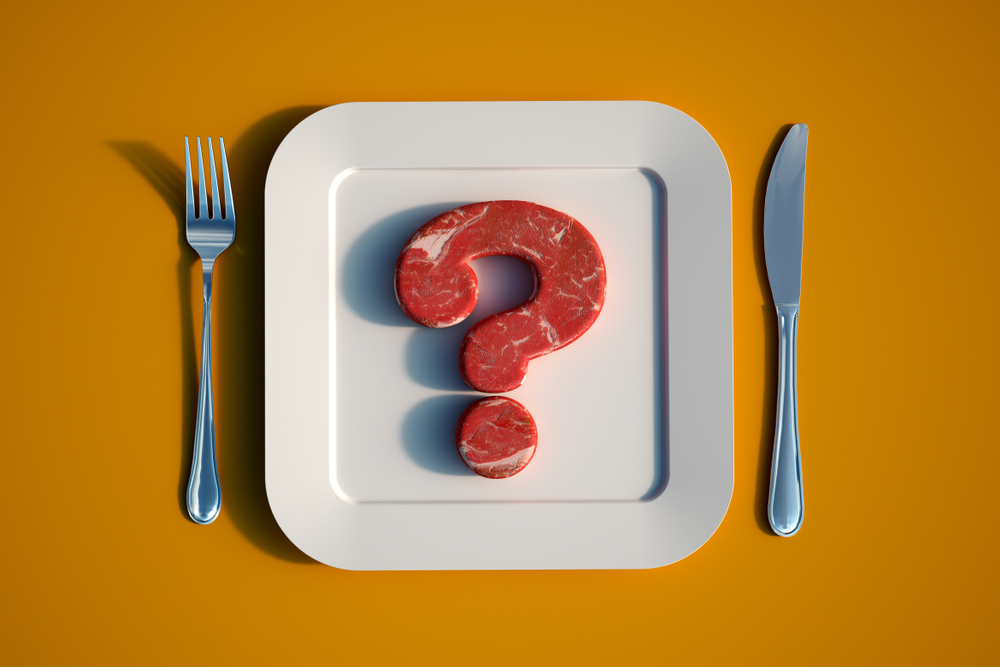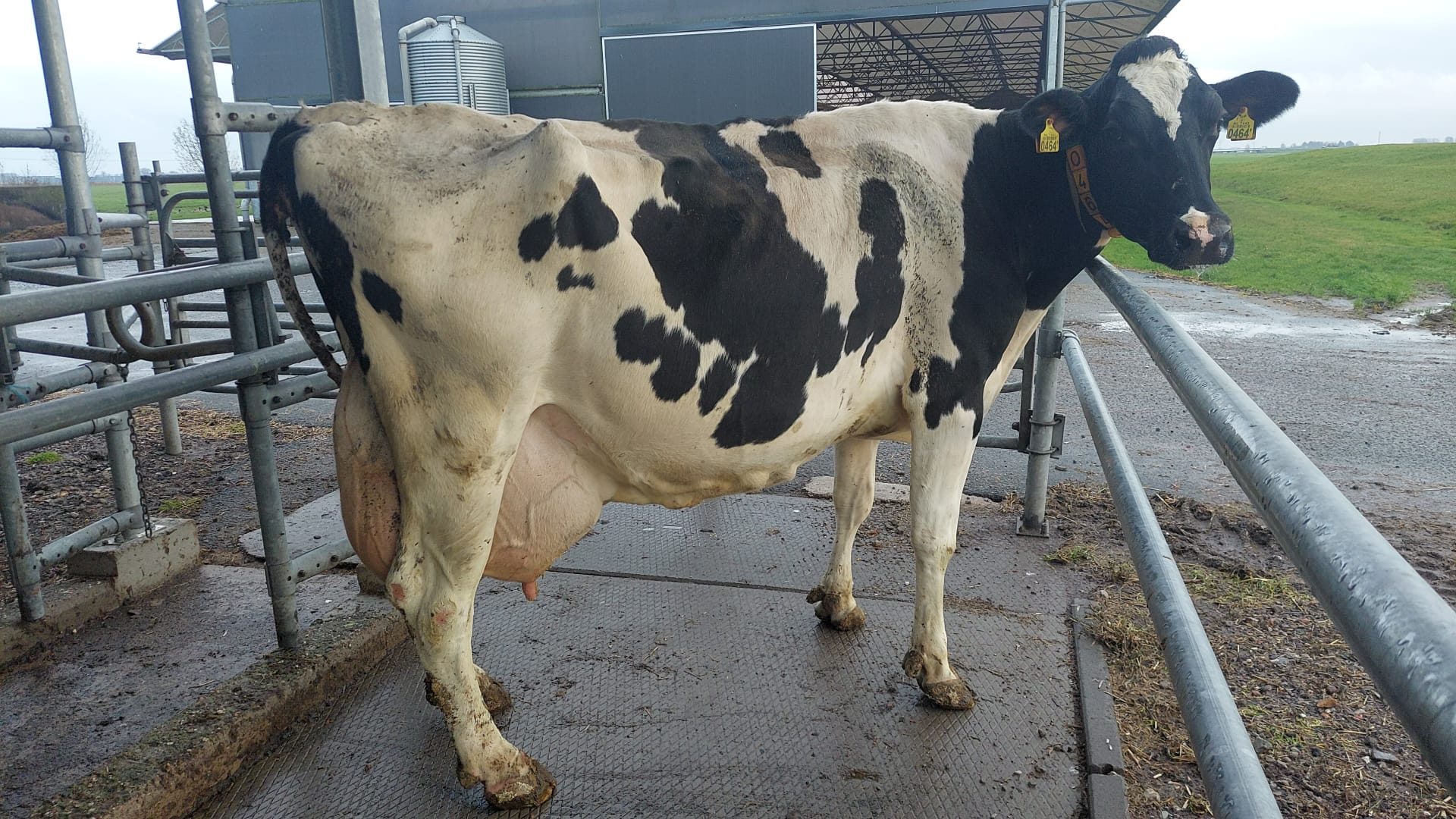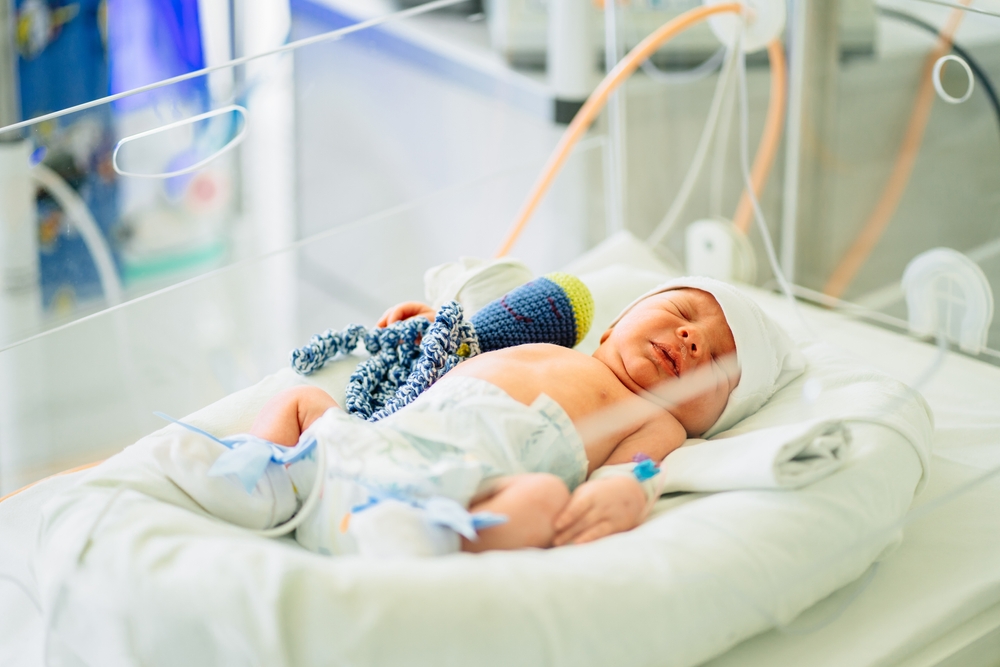Researchers at Wageningen Food Safety Research (WFSR) have developed a tool reminiscent of a thermometer, designed to be inserted into the kidneys of slaughtered cattle. Within minutes, it reveals whether antibiotics are present in the tissue and, if so, which ones. This development marks a first step towards simplifying the control of antibiotics in animal tissues for food purposes.
‘We use coated blades’, explains researcher Josha Jager (WFSR). These are small strips with a special coating, resembling a miniature sword about five centimeters in length. ‘We insert these into an intact bovine kidney obtained from slaughtered cattle. The blade, carrying kidney fluid extracted from the tissue, can then be placed directly into a prototype interface of a mass spectrometer. This system measures, in less than a minute, whether antibiotics are present and identifies which ones.’
This is particularly useful for organizations like the Dutch food safety authority (Nederlandse Voedsel- en Warenautoriteit, NVWA), which monitors whether meat complies with European legislation.

Fast
The current methods for detecting antibiotics in meat are relatively time-consuming. Jager notes that the exact duration depends on various factors. ‘The process currently involves multiple phases and steps, sometimes requiring long incubation times. Initial screening is typically performed using microbiological methods where possible. If those tests yield an deviant result, confirmatory analysis follows using chromatography and mass spectrometry.’
Preparing samples for confirmatory testing is labor-intensive. ‘We need to homogenize organs by grinding them’, Jager explains. ‘From the resulting mixture, substances can be extracted, isolated, and analyzed. Now, we can simply insert the blade into an intact organ and analyze the extracted substances directly.’ It’s almost as straightforward as inserting a thermometer.
However, more research is needed to apply the technique in routine controls. ‘Quantification is especially important’, Jager emphasizes. ‘To use this method for monitoring purposes, we must determine how much of each substance is present in the tissue.’
Accurate
The mass spectrometer used in this method separates ions based on their mass and charge using an electric field. The result is a graph of peaks, which are compared to reference values of known substances. This allows researchers to identify the compounds in the sample.
‘This technique gives us added specificity by separating the target compounds from background substances in the kidney’, says Jager. While it may not achieve the full resolution of chromatography coupled to mass spectrometry, it is much more specific than directly analyzing untreated samples like milk or meat, which would produce a single, undifferentiated peak. ‘And it’s incredibly fast – sampling animal tissue and obtaining results can take less than five minutes.’
Applications
The blade technique can be used for more than just detecting antibiotics in bovine kidneys. Other researchers have applied it to measure the authenticity of honey and detect pesticides in fruit. ‘Other research groups are also testing this technique for different substances and tissue types’, Jager explains. ‘But we’re not there yet – the technique must meet food safety regulations before it can be widely implemented.’
Translated using DeepL

 The Dutch food safety authority (Nederlandse Voedsel- en Warenautoriteit, NVWA) controls, among other things, that our meat complies with European legislation. Photo Shutterstock
The Dutch food safety authority (Nederlandse Voedsel- en Warenautoriteit, NVWA) controls, among other things, that our meat complies with European legislation. Photo Shutterstock 

